| Tip 1 |
Online Tools: “DMPTool” |
| |
T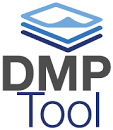 here are multiple online tools available to assist researchers with creating a Data Sharing Plan that complies with the new NIH mandate. One example is “DMPTool”. It is a free open-source tool accessible to all within the scientific community. DMPTool is an online application that guides researchers through the process of creating a plan, utilizing a click-through wizard for creating a Data Management Plan (DMP) that complies with NIH requirements. here are multiple online tools available to assist researchers with creating a Data Sharing Plan that complies with the new NIH mandate. One example is “DMPTool”. It is a free open-source tool accessible to all within the scientific community. DMPTool is an online application that guides researchers through the process of creating a plan, utilizing a click-through wizard for creating a Data Management Plan (DMP) that complies with NIH requirements.
|
| Tip 2 |
Utilizing dkNET to Navigate Data Sharing Mandate |
| |

Since the release of the data sharing mandate, dkNET has been actively making resources available to researchers in order to help navigate all the requirements of the mandate. Available through the dkNET website, resources can be found highlighting all available tools and templates addressing the mandate, along with direct web links to multiple YouTube videos and all webinars that have been held on the topic. Additionally, dkNET continues to create new webinar series, intended to help answer questions and assist researchers in creating plans in line with the data sharing mandate. Researchers can also expect to find announcements of office hours held bydkNET to answer any questions regarding the mandate. Click the HERE to access the dkNET website and view all available resources.
|
| Tip 3 |
Utilizing Available Templates |
| |
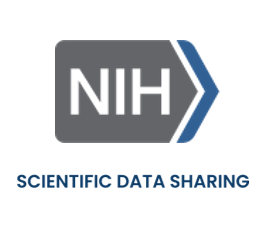 Currently, there are many templates available intended as a guide through building a plan that complies with the NIH mandate. The NIH has made available a step-by-step template to help researchers address all the new requirements. The NIH template also provides example answers to each step to show what kind of information should be provided for each portion of the mandate. The same template also is accessible through the DMPTool in the same step-by-step manner. Currently, there are many templates available intended as a guide through building a plan that complies with the NIH mandate. The NIH has made available a step-by-step template to help researchers address all the new requirements. The NIH template also provides example answers to each step to show what kind of information should be provided for each portion of the mandate. The same template also is accessible through the DMPTool in the same step-by-step manner.
Click HERE to access the NIH template and create a Data Management Plan.
|
| Tip 4 |
Budgeting for Data Management & Sharing |
| |
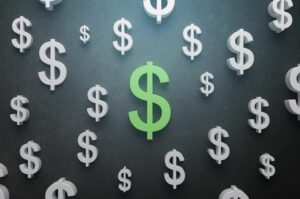 The NIH data sharing mandate requires data to be accessible and reusable by other researchers. As it is understood that this requirement is likely to incur additional costs, however, researchers are allowed to budget for making their data accessible to other researchers. For that reason, the NIH has stated that researchers may request funds for data management in the budget section of the application. The NIH outlines two categories for funds – allowable costs and unallowable costs. Allowable costs include any funds that may be used for data curation, alternatively, unallowable costs include any funds associated with the routine process of conducting research. Additionally, the NIH asks investigators to justify the funds being requested by explicitly stating the amount of data expected to be shared. The NIH data sharing mandate requires data to be accessible and reusable by other researchers. As it is understood that this requirement is likely to incur additional costs, however, researchers are allowed to budget for making their data accessible to other researchers. For that reason, the NIH has stated that researchers may request funds for data management in the budget section of the application. The NIH outlines two categories for funds – allowable costs and unallowable costs. Allowable costs include any funds that may be used for data curation, alternatively, unallowable costs include any funds associated with the routine process of conducting research. Additionally, the NIH asks investigators to justify the funds being requested by explicitly stating the amount of data expected to be shared.
Click HERE to access the detailed NIH report addressing allowable vs. unallowable costs, and the application process for budgeting.
|
| Tip 5 |
Data Management |
| |
 The NIH data sharing mandate emphasizes the importance of good data management practices and encourages data management to be reflective of practices within specific research communities. Data management is the process of validating, organizing, protecting, maintaining, and processing scientific data to ensure the accessibility, reliability, and quality of the data for its users. As stated by the NIH, proper data management helps maintain scientific rigor and research integrity. The NIH mandate encourages data management and sharing practices to be consistent with the FAIR (Findable, Accessible, Interoperable, and Reusable) data principles. The NIH also requires grantee institutions to keep the data for three years following the closeout of the contract. The NIH data sharing mandate emphasizes the importance of good data management practices and encourages data management to be reflective of practices within specific research communities. Data management is the process of validating, organizing, protecting, maintaining, and processing scientific data to ensure the accessibility, reliability, and quality of the data for its users. As stated by the NIH, proper data management helps maintain scientific rigor and research integrity. The NIH mandate encourages data management and sharing practices to be consistent with the FAIR (Findable, Accessible, Interoperable, and Reusable) data principles. The NIH also requires grantee institutions to keep the data for three years following the closeout of the contract.
Click HERE to access the detailed NIH report addressing the different requirements of data management, and how to address them in the DMS plan.
|
| Tip 6 |
Accessing Scientific Data |
| |
 The NIH deeply values making research results available to the public. The NIH believes that allowing others to access data enables data reuse, increases transparency, and facilitates reproducibility of research results. It is suggested that researchers make data available in a repository; however, the NIH does not require the use of a particular repository. To bolster data sharing, NIH supports a number of data repositories, which support a wide variety of datasets. The NIH provides a list of repositories for specific types of data, along with repositories that accept all types of data. Selecting a repository is left to the discretion up to the researcher, as long as the data can be accessible to the public. The NIH deeply values making research results available to the public. The NIH believes that allowing others to access data enables data reuse, increases transparency, and facilitates reproducibility of research results. It is suggested that researchers make data available in a repository; however, the NIH does not require the use of a particular repository. To bolster data sharing, NIH supports a number of data repositories, which support a wide variety of datasets. The NIH provides a list of repositories for specific types of data, along with repositories that accept all types of data. Selecting a repository is left to the discretion up to the researcher, as long as the data can be accessible to the public.
Click HERE to access the detailed information regarding data accessibility, along with the list of suggested repositories provided by the NIH.
|
| Tip 7 |
Protecting Privacy |
| |
 While the NIH data sharing mandate highlights the importance of publicly available scientific data, it equally highlights the importance of protecting the privacy of human participants. Note that the data sharing plan must adhere with federal regulations for the protection of human research participants. The NIH provides 6 core principles that investigators should keep in mind when developing Data Management and Sharing Plans and carrying out NIH-funded or supported research. The NIH also provides a template to guide researchers and human participants through the informed consent process. The NIH believes that following their best practices highlighted in the mandate will allow for a robust privacy process, while publicly sharing data. While the NIH data sharing mandate highlights the importance of publicly available scientific data, it equally highlights the importance of protecting the privacy of human participants. Note that the data sharing plan must adhere with federal regulations for the protection of human research participants. The NIH provides 6 core principles that investigators should keep in mind when developing Data Management and Sharing Plans and carrying out NIH-funded or supported research. The NIH also provides a template to guide researchers and human participants through the informed consent process. The NIH believes that following their best practices highlighted in the mandate will allow for a robust privacy process, while publicly sharing data.
Click HERE to access the detailed best practices protocol provided by the NIH for effective strategies in order to achieve privacy protection in the context of the DMS Policy.
|
| Tip 8 |
Research Tools |
| |
 The NIH mandate comes with the expectation for funding recipients to appropriately disseminate and access research tools developed with NIH funding. In general, NIH considers research tools to be unique research resources that encompass a full range of tools which scientists use in the laboratory, such as: cell lines, monoclonal antibodies, reagents, animal models, growth factors, combinatorial chemistry and DNA libraries, clones and cloning tools, and laboratory equipment and machines. The NIH highlights the importance of sharing research tools as an important means for enhancing the value of NIH-sponsored research. At the same time, NIH recognizes the rights of funding recipients and contractors to elect and retain title to subject inventions developed with federal funding. Therefore, the NIH has published a set of principles and guidelines known as the NIH Research Tools Policy, intended to serve as a reference for identifying an appropriate strategy for disseminating and sharing research tools. The NIH mandate comes with the expectation for funding recipients to appropriately disseminate and access research tools developed with NIH funding. In general, NIH considers research tools to be unique research resources that encompass a full range of tools which scientists use in the laboratory, such as: cell lines, monoclonal antibodies, reagents, animal models, growth factors, combinatorial chemistry and DNA libraries, clones and cloning tools, and laboratory equipment and machines. The NIH highlights the importance of sharing research tools as an important means for enhancing the value of NIH-sponsored research. At the same time, NIH recognizes the rights of funding recipients and contractors to elect and retain title to subject inventions developed with federal funding. Therefore, the NIH has published a set of principles and guidelines known as the NIH Research Tools Policy, intended to serve as a reference for identifying an appropriate strategy for disseminating and sharing research tools.
Click HERE for the detailed report addressing the principles for disseminating research tools within the NIH mandate.
|
| Tip 9 |
Genomic Data Sharing Policy |
| |
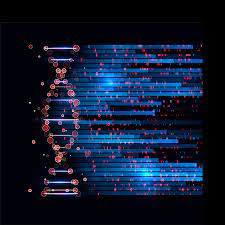 The NIH expects responsible sharing of human and non-human genomic data resulting from NIH-funded research. The timely sharing of research results can accelerate discoveries that improve the ability to diagnose, treat, and prevent disease. To comply with the NIH genomic data sharing policy, researchers need to: develop and provide a plan for sharing genomic data; provide an institutional certification form when submitting just-in-time materials; submit genomic data in a timely manner to an appropriate repository; responsibly use controlled-access data; and appropriately cite controlled-access data in publications and presentations. It is also important to note that individual NIH institutions may have additional requirements. The NIH expects responsible sharing of human and non-human genomic data resulting from NIH-funded research. The timely sharing of research results can accelerate discoveries that improve the ability to diagnose, treat, and prevent disease. To comply with the NIH genomic data sharing policy, researchers need to: develop and provide a plan for sharing genomic data; provide an institutional certification form when submitting just-in-time materials; submit genomic data in a timely manner to an appropriate repository; responsibly use controlled-access data; and appropriately cite controlled-access data in publications and presentations. It is also important to note that individual NIH institutions may have additional requirements.
Click HERE to access the detailed information regarding the NIH genomic data sharing policy.
|
| Tip 10 |
Does the Genomic Data Sharing Policy Apply to my Reserach? |
| |
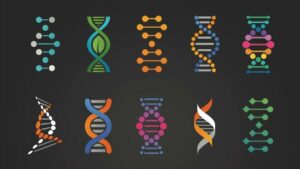 It is crucial for researchers to learn which research projects do and do not fall under the NIH genomic data sharing policy. NIH GDS policy applies to research that is both funded by the NIH and generate a large-scale human or non-human genomic data. Examples of such data include but are not limited to: sequence data from more than 100 isolates from infectious organism, data from 300,000 or more variant sites in more than 1,000 human research participants, whole genome or exome sequence data of more than one model organism species or strain, and much more. Click HERE for the full list of examples. There are a few examples where a project generated genomic data but is not within the policy’s intended scope, such as: instrument calibration exercises, statistical or technical methods development, and the use of genomic data for control purposes, such as for assay development. It is crucial for researchers to learn which research projects do and do not fall under the NIH genomic data sharing policy. NIH GDS policy applies to research that is both funded by the NIH and generate a large-scale human or non-human genomic data. Examples of such data include but are not limited to: sequence data from more than 100 isolates from infectious organism, data from 300,000 or more variant sites in more than 1,000 human research participants, whole genome or exome sequence data of more than one model organism species or strain, and much more. Click HERE for the full list of examples. There are a few examples where a project generated genomic data but is not within the policy’s intended scope, such as: instrument calibration exercises, statistical or technical methods development, and the use of genomic data for control purposes, such as for assay development.
Click HERE for the detailed NIH report highlighting which projects do and do not fall under the scope of the NIH GDS policy.
|
| Tip 11 |
How to Request and Access Datasets from dbGaP |
| |
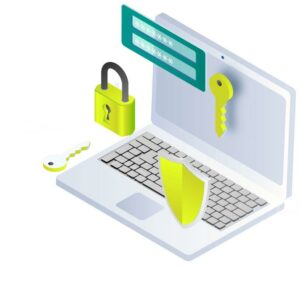 Many NIH repositories with controlled-access human genomic data require that users request access to datasets for research projects through dbGaP. NIH requires anyone interested in using controlled-access genomic data to meet minimum qualifications and to apply for access to the data. If the request is approved, the investigator will be allowed to access the dataset for one year, with the option to renew. Those eligible to apply must be a permanent employee at their institution and are required to be at a level equivalent to a tenure-track professor, or a senior scientist with responsibilities that may include laboratory or research program administration and oversight. Once an application has been submitted and approved through a detailed review process by the NIH, investigators will receive an email with detailed instructions on how to access the data. Investigators and their institutions are responsible for safeguarding the accessed datasets. Many NIH repositories with controlled-access human genomic data require that users request access to datasets for research projects through dbGaP. NIH requires anyone interested in using controlled-access genomic data to meet minimum qualifications and to apply for access to the data. If the request is approved, the investigator will be allowed to access the dataset for one year, with the option to renew. Those eligible to apply must be a permanent employee at their institution and are required to be at a level equivalent to a tenure-track professor, or a senior scientist with responsibilities that may include laboratory or research program administration and oversight. Once an application has been submitted and approved through a detailed review process by the NIH, investigators will receive an email with detailed instructions on how to access the data. Investigators and their institutions are responsible for safeguarding the accessed datasets.
Click HERE to access the step-by-step breakdown of the data access and request process out forth by the NIH
|


 Currently, there are many templates available intended as a guide through building a plan
Currently, there are many templates available intended as a guide through building a plan  The NIH data sharing mandate requires data to be accessible and reusable by other researchers. As it is understood that this requirement is likely to incur additional costs, however, researchers are allowed to budget for making their data accessible to other researchers. For that reason, the NIH has stated that researchers may request funds for data management in the budget section of the application. The NIH outlines two categories for funds – allowable costs and unallowable costs. Allowable costs include any funds that may be used for data curation, alternatively, unallowable costs include any funds associated with the routine process of conducting research. Additionally, the NIH asks investigators to justify the funds being requested by explicitly stating the amount of data expected to be shared.
The NIH data sharing mandate requires data to be accessible and reusable by other researchers. As it is understood that this requirement is likely to incur additional costs, however, researchers are allowed to budget for making their data accessible to other researchers. For that reason, the NIH has stated that researchers may request funds for data management in the budget section of the application. The NIH outlines two categories for funds – allowable costs and unallowable costs. Allowable costs include any funds that may be used for data curation, alternatively, unallowable costs include any funds associated with the routine process of conducting research. Additionally, the NIH asks investigators to justify the funds being requested by explicitly stating the amount of data expected to be shared.  The NIH data sharing mandate emphasizes the importance of good data management practices and encourages data management to be reflective of practices within specific research communities. Data management is the process of validating, organizing, protecting, maintaining, and processing scientific data to ensure the accessibility, reliability, and quality of the data for its users. As stated by the NIH, proper data management helps maintain scientific rigor and research integrity. The NIH mandate encourages data management and sharing practices to be consistent with the FAIR (Findable, Accessible, Interoperable, and Reusable) data principles. The NIH also requires grantee institutions to keep the data for three years following the closeout of the contract.
The NIH data sharing mandate emphasizes the importance of good data management practices and encourages data management to be reflective of practices within specific research communities. Data management is the process of validating, organizing, protecting, maintaining, and processing scientific data to ensure the accessibility, reliability, and quality of the data for its users. As stated by the NIH, proper data management helps maintain scientific rigor and research integrity. The NIH mandate encourages data management and sharing practices to be consistent with the FAIR (Findable, Accessible, Interoperable, and Reusable) data principles. The NIH also requires grantee institutions to keep the data for three years following the closeout of the contract.  The NIH deeply values making research results available to the public. The NIH believes that allowing others to access data enables data reuse, increases transparency, and facilitates reproducibility of research results. It is suggested that researchers make data available in a repository; however, the NIH does not require the use of a particular repository. To bolster data sharing, NIH supports a number of data repositories, which support a wide variety of datasets. The NIH provides a list of repositories for specific types of data, along with repositories that accept all types of data. Selecting a repository is left to the discretion up to the researcher, as long as the data can be accessible to the public.
The NIH deeply values making research results available to the public. The NIH believes that allowing others to access data enables data reuse, increases transparency, and facilitates reproducibility of research results. It is suggested that researchers make data available in a repository; however, the NIH does not require the use of a particular repository. To bolster data sharing, NIH supports a number of data repositories, which support a wide variety of datasets. The NIH provides a list of repositories for specific types of data, along with repositories that accept all types of data. Selecting a repository is left to the discretion up to the researcher, as long as the data can be accessible to the public.  While the NIH data sharing mandate highlights the importance of publicly available scientific data, it equally highlights the importance of protecting the privacy of human participants. Note that the data sharing plan must adhere with federal regulations for the protection of human research participants. The NIH provides
While the NIH data sharing mandate highlights the importance of publicly available scientific data, it equally highlights the importance of protecting the privacy of human participants. Note that the data sharing plan must adhere with federal regulations for the protection of human research participants. The NIH provides  The NIH mandate comes with the expectation for funding recipients to appropriately disseminate and access research tools developed with NIH funding. In general, NIH considers research tools to be unique research resources that encompass a full range of tools which scientists use in the laboratory, such as: cell lines, monoclonal antibodies, reagents, animal models, growth factors, combinatorial chemistry and DNA libraries, clones and cloning tools, and laboratory equipment and machines. The NIH highlights the importance of sharing research tools as an important means for enhancing the value of NIH-sponsored research. At the same time, NIH recognizes the rights of funding recipients and contractors to elect and retain title to subject inventions developed with federal funding. Therefore, the NIH has published a set of principles and guidelines known as the
The NIH mandate comes with the expectation for funding recipients to appropriately disseminate and access research tools developed with NIH funding. In general, NIH considers research tools to be unique research resources that encompass a full range of tools which scientists use in the laboratory, such as: cell lines, monoclonal antibodies, reagents, animal models, growth factors, combinatorial chemistry and DNA libraries, clones and cloning tools, and laboratory equipment and machines. The NIH highlights the importance of sharing research tools as an important means for enhancing the value of NIH-sponsored research. At the same time, NIH recognizes the rights of funding recipients and contractors to elect and retain title to subject inventions developed with federal funding. Therefore, the NIH has published a set of principles and guidelines known as the  The NIH expects responsible sharing of human and non-human genomic data resulting from NIH-funded research. The timely sharing of research results can accelerate discoveries that improve the ability to diagnose, treat, and prevent disease. To comply with the NIH genomic data sharing policy, researchers need to: develop and provide a plan for sharing genomic data; provide an institutional certification form when submitting just-in-time materials; submit genomic data in a timely manner to an appropriate repository; responsibly use controlled-access data; and appropriately cite controlled-access data in publications and presentations. It is also important to note that individual NIH institutions may have additional requirements.
The NIH expects responsible sharing of human and non-human genomic data resulting from NIH-funded research. The timely sharing of research results can accelerate discoveries that improve the ability to diagnose, treat, and prevent disease. To comply with the NIH genomic data sharing policy, researchers need to: develop and provide a plan for sharing genomic data; provide an institutional certification form when submitting just-in-time materials; submit genomic data in a timely manner to an appropriate repository; responsibly use controlled-access data; and appropriately cite controlled-access data in publications and presentations. It is also important to note that individual NIH institutions may have additional requirements.  It is crucial for researchers to learn which research projects do and do not fall under the NIH genomic data sharing policy. NIH GDS policy applies to research that is both funded by the NIH and generate a large-scale human or non-human genomic data. Examples of such data include but are not limited to: sequence data from more than 100 isolates from infectious organism, data from 300,000 or more variant sites in more than 1,000 human research participants, whole genome or exome sequence data of more than one model organism species or strain, and much more. Click
It is crucial for researchers to learn which research projects do and do not fall under the NIH genomic data sharing policy. NIH GDS policy applies to research that is both funded by the NIH and generate a large-scale human or non-human genomic data. Examples of such data include but are not limited to: sequence data from more than 100 isolates from infectious organism, data from 300,000 or more variant sites in more than 1,000 human research participants, whole genome or exome sequence data of more than one model organism species or strain, and much more. Click  Many NIH repositories with controlled-access human genomic data require that users request access to datasets for research projects through dbGaP. NIH requires anyone interested in using controlled-access genomic data to meet minimum qualifications and to apply for access to the data. If the request is approved, the investigator will be allowed to access the dataset for one year, with the option to renew. Those eligible to apply must be a permanent employee at their institution and are required to be at a level equivalent to a tenure-track professor, or a senior scientist with responsibilities that may include laboratory or research program administration and oversight. Once an application has been submitted and approved through a detailed review process by the NIH, investigators will receive an email with detailed instructions on how to access the data. Investigators and their institutions are responsible for safeguarding the accessed datasets.
Many NIH repositories with controlled-access human genomic data require that users request access to datasets for research projects through dbGaP. NIH requires anyone interested in using controlled-access genomic data to meet minimum qualifications and to apply for access to the data. If the request is approved, the investigator will be allowed to access the dataset for one year, with the option to renew. Those eligible to apply must be a permanent employee at their institution and are required to be at a level equivalent to a tenure-track professor, or a senior scientist with responsibilities that may include laboratory or research program administration and oversight. Once an application has been submitted and approved through a detailed review process by the NIH, investigators will receive an email with detailed instructions on how to access the data. Investigators and their institutions are responsible for safeguarding the accessed datasets. 
